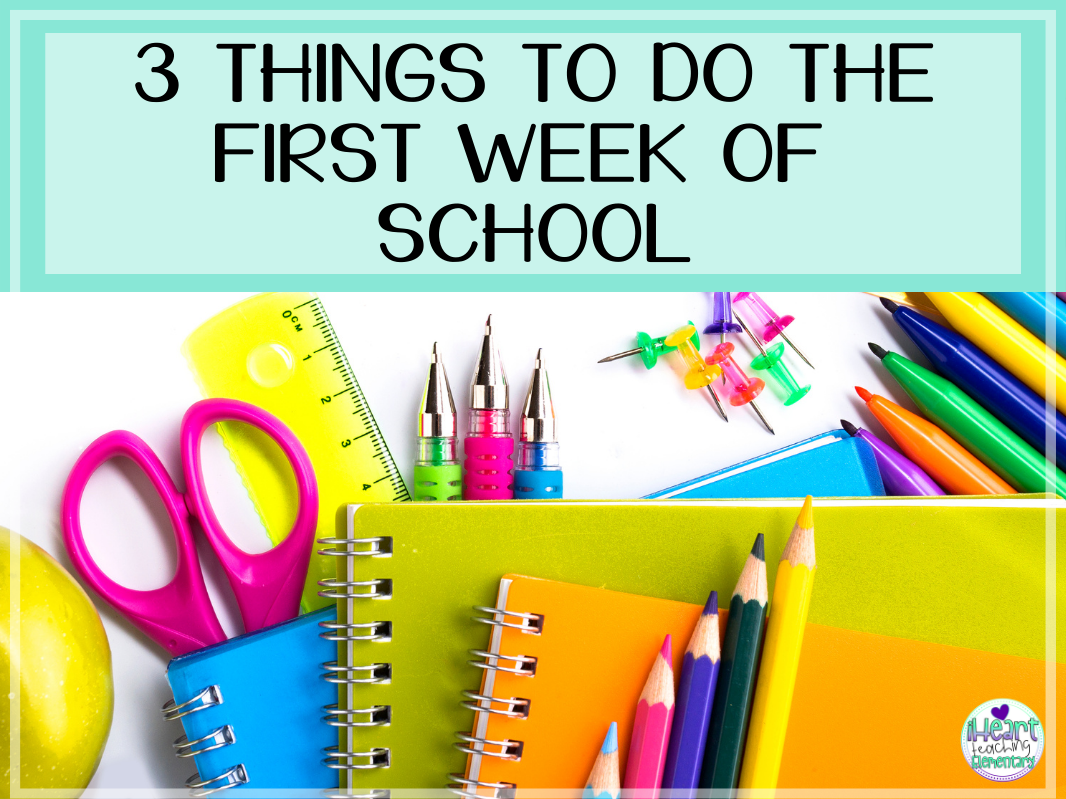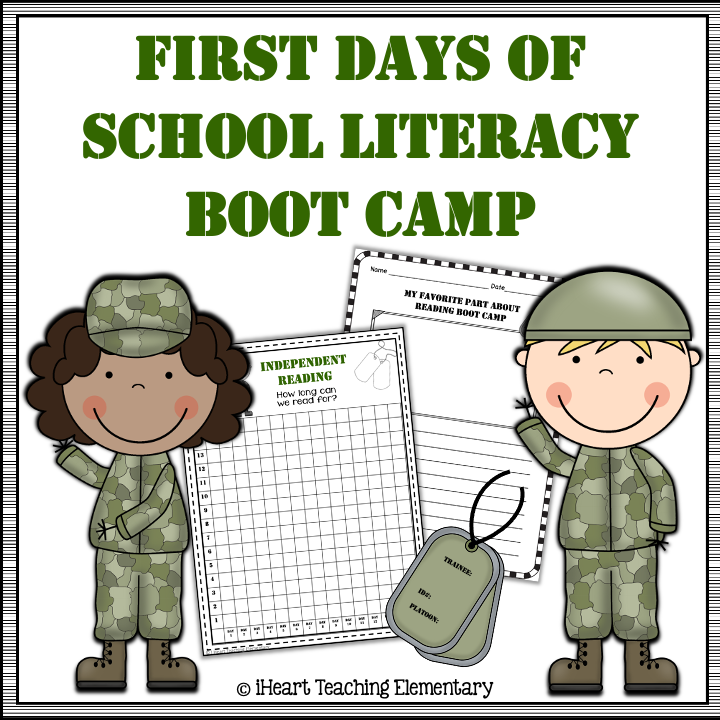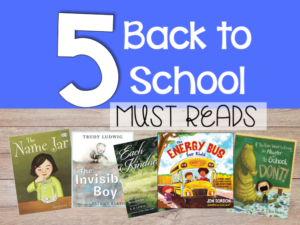The first week of school is exciting but it can also be stressful and challenging. Before rushing into the curriculum, here are three things that you should do that first week of school to set yourself up for success the whole year.
Train Kids to Have Reading Stamina Starting on the First Day of School
The first thing that I make sure gets done the first week of school is to train my students to have reading stamina. Reading stamina is when kids are able to read for a certain amount of time.
At the beginning of the year, I try for 20 minutes. But by the end of the year, the kids are reading for 40 to 45 minutes in my third-grade classroom. We start on day one right away working on reading stamina.
I explain it to the kids this way: People who run a marathon didn’t just get up one day and run 26 miles. They started out by running a short distance and building on that distance every day, as they train until they were able to run 26 miles.
It’s the same thing with reading. There’s a good chance that many of your students probably don’t read much over the summer. So they need to build that reading stamina until they reach the desired amount of sustained independent reading or IDR (independent reading).
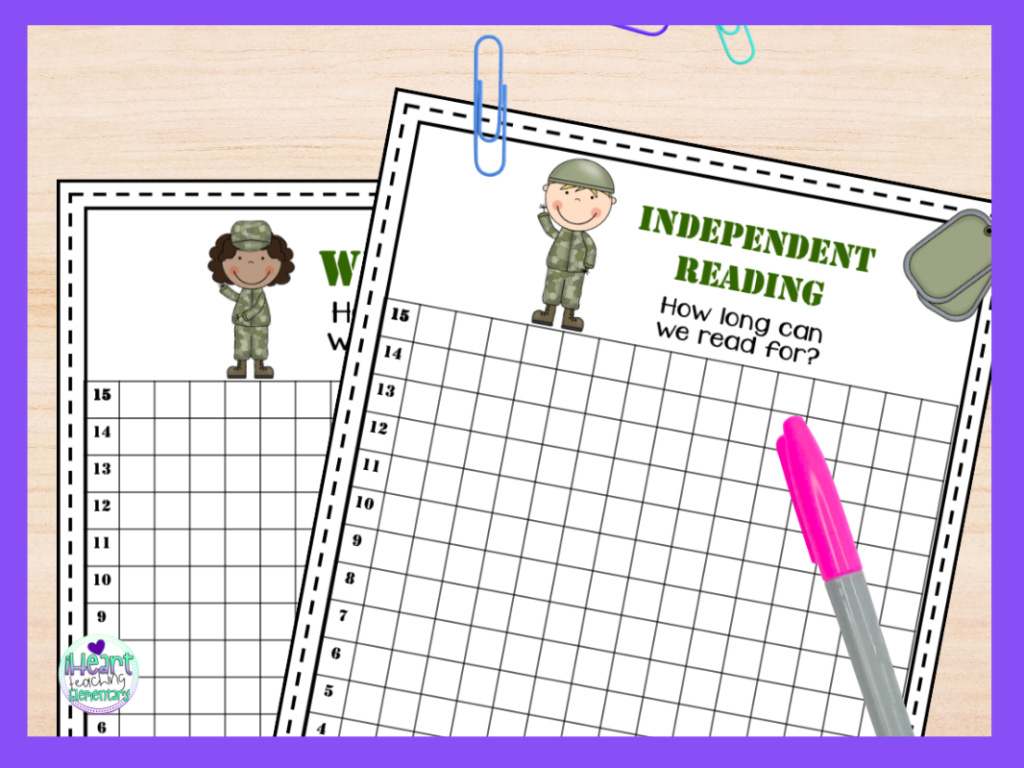
Independent reading is a great way for kids to improve their reading. So you want them to be able to do it daily for a sustained amount of time. In order to get to the amount of time that you want them to read, they need to be trained every day for those first two weeks of school.
I know that teachers get stuck on the fact that they need to start their curriculum right away. I promise you that if you don’t jump into the curriculum, and you start by training them to read independently, it’s going to help you the rest of the year.
When I train kids to have reading stamina I like to make it fun so I do a literacy boot camp. I even give them dog tags to wear during our boot camp sessions and the kids love it.
My classroom library is not open at this point of the year because they need to know the rules and procedures for it. So what I do is they get their books from baskets that I have prefilled with a variety of genres.
On the first day of boot camp, I go over expectations by creating a chart with the kids. I like to make the chart with them so that they have some accountability for what we’re doing.
Expectations might include read the whole time, stay focused and do real reading.
What we do on the very first day is start with three to five minutes. And their only task is to read the book for amount of time. That’s all they’re doing is reading.
After the day’s boot camp session we review the expectations and the kids rate themselves according to how they think they did during IDR. Again, there’s that accountability.
I usually run my literacy boot camp for about a couple of weeks. Every day I just increase the time until we reach 20 minutes of reading stamina. I think 20 minutes is a good amount to start the year in third grade.
How much time you start with on your first day of literacy boot camp depends on your class. Sometimes I do three minutes. Sometimes I do five minutes. I need to observe the kids to see how they do and then I determine how much time to start with and how much time I add each day.
Every year is different because you have a different set of kids. And it’ll depend on how fast you get to that 20 minutes as well, because some kids will be able to reach 20 minutes quickly. But some classes take a little bit longer.
Starting the year off with literacy boot camp is going to ensure that you’ll have those 20 minutes during the reading block to work with groups or individual students.

Build Relationships with Students
The next thing that I do during that first week of school is start building relationships with the students.
The first week is a great time to get to know your students and build relationships with them and get to know their interests, their families, and their backgrounds. This will help you connect with them and build a rapport.
I don’t know if you’ve heard this before. I really dislike the old-fashioned term “Don’t smile until December”. Your students are not military soldiers, you’re not their sergeant. I like to think of them as my school family. And what you do with family is get to know them and have fun.
Now, of course, you need rules, and they need to follow those rules. But there’s a difference between being strict and expecting kids to follow the rules and having a relationship with kids and them knowing the expectations of your classroom.
Kids are more willing to learn from teachers that they know care about them. Relationships make a big difference in how your students will behave, and how much effort they’re going to put forth.
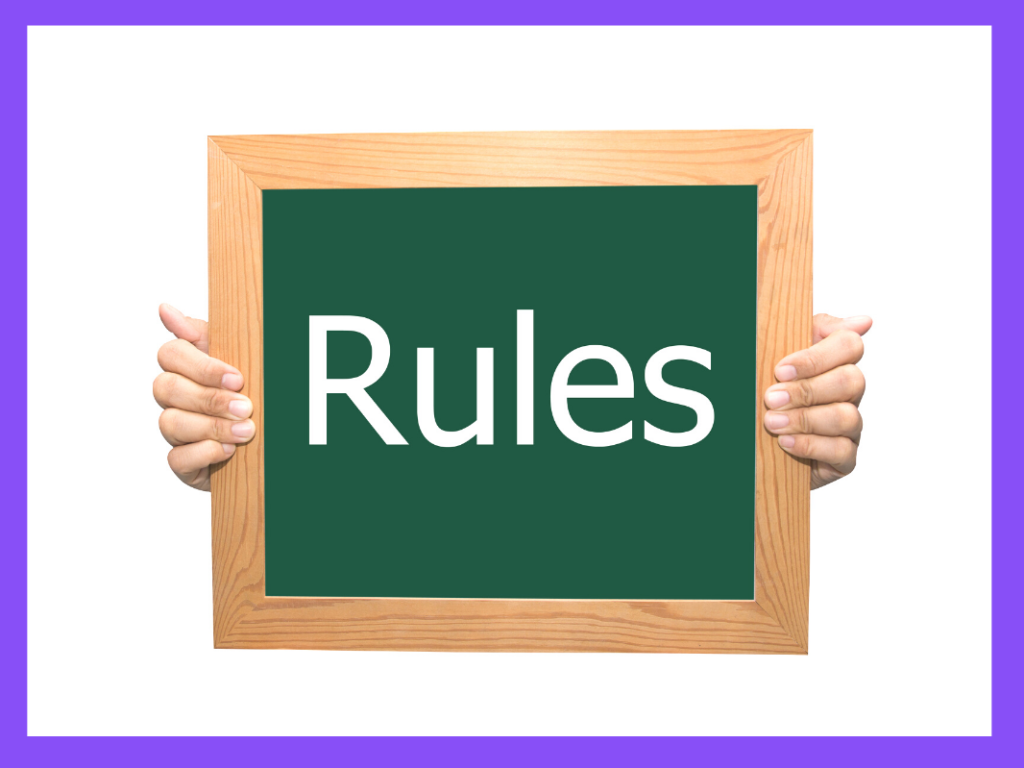
Establish Rules and Procedures
The third thing that I do during the first week of school is establish rules and procedures for the classroom. This is going to help your students feel comfortable and know what to expect throughout the year.
It’s also going to help make your year go more smoothly. You want to start this the first week of school before you dive into any of your content. Don’t worry about getting into that content right away.
Even if you see everybody else doing it.
Go over rules and procedures and practice them over and over again so that your students know the expectations of your class. Now, that doesn’t mean that we’re just going to go over the rules and procedures over and over again and do nothing else.
I like to make it fun because it can be boring just going over the rules and procedures all day for that first week.
Whenever we get to an activity where I need to go over the rules and the procedures we stop. I ask for volunteers to show the right way to do something and the wrong way to do something.
I talk about how I gauge the kids’ ability to follow directions at Meet the Teacher in this post. That information is useful when deciding who to choose to show the right way and the wrong way.
I do this so that later in the year when they’re doing something incorrectly I can say, “You showed me the right way so you know how to do it correctly.”
You’ll want to do this for every activity anytime that you want something done a certain way. Repeat, repeat, repeat. Especially that first week.
That doesn’t mean you’re not going to have to repeat or review it ever again in the year. But for the most part, the kids are going to know the expectations. They’re going to know the rules and procedures, and most of the time, they will follow them.
I hope this was helpful and that you have an amazing first week of school.
🛍 Resources Found in This Post 🛍
📌 Save this Post on Pinterest 📌

